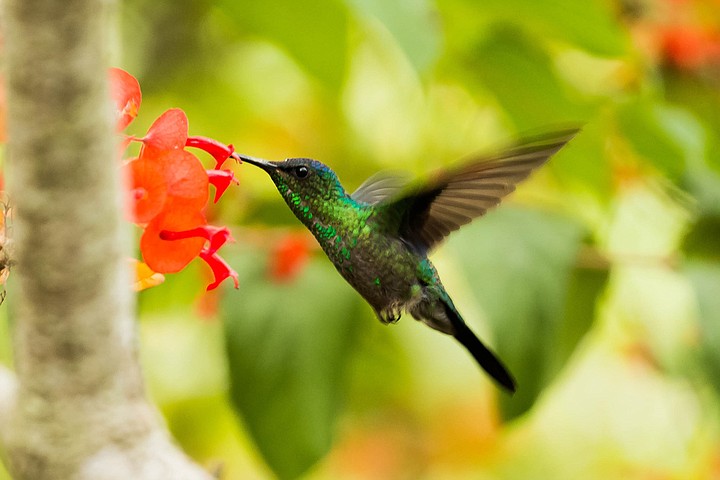 Facebook
Facebook
 X
X
 Instagram
Instagram
 TikTok
TikTok
 Youtube
Youtube

Ceanothus, or wild lilac, has been springing into bloom for some time -- at least in the warmer coastal areas. By early March, virtually every chaparral-covered canyon and hillside on the coastal strip may exhibit blue- or white-flowering specimens. The peak of the ceanothus bloom will work its way eastward, reaching Ramona and Alpine by late March or April, and the Palomar, Cuyamaca, and Laguna mountains by April or May. For the next few years, vigorous ceanothus growth will continue in Cuyamaca Rancho State Park, where the devastating 2003 Cedar wildfire incinerated nearly all of the trees and opened up opportunities for post-fire pioneering vegetation.

Hummingbirds are swarming over San Diego County’s backyard gardens and scrub-covered coastal hillsides, and the warm Anza-Borrego Desert. Red monkey flower (which blooms best in March and April) is a favorite source of nectar near the coast, while red-blossomed chuparosa and ocotillo normally play the same role in the desert. Keep an eye out for the male hummingbird’s mating “dance,” which involves soaring ascents followed by dramatic downward dives.

After dinnertime at this time of year, five carnivore constellations are rising upright in a row from the northeast to south, as if out of hibernation. They’re all seen in profile ,with their noses pointed up and their feet (if any) to the right. These are: Ursa Major (the Big Bear) in the northeast (with the Big Dipper as its brightest part), Leo the Lion in the east, dim Hydra the Sea Serpent in the southeast, Canis Minor (the Little Dog) higher in the south-southeast, and bright Canis Major (the Big Dog) in the south.


Ceanothus, or wild lilac, has been springing into bloom for some time -- at least in the warmer coastal areas. By early March, virtually every chaparral-covered canyon and hillside on the coastal strip may exhibit blue- or white-flowering specimens. The peak of the ceanothus bloom will work its way eastward, reaching Ramona and Alpine by late March or April, and the Palomar, Cuyamaca, and Laguna mountains by April or May. For the next few years, vigorous ceanothus growth will continue in Cuyamaca Rancho State Park, where the devastating 2003 Cedar wildfire incinerated nearly all of the trees and opened up opportunities for post-fire pioneering vegetation.

Hummingbirds are swarming over San Diego County’s backyard gardens and scrub-covered coastal hillsides, and the warm Anza-Borrego Desert. Red monkey flower (which blooms best in March and April) is a favorite source of nectar near the coast, while red-blossomed chuparosa and ocotillo normally play the same role in the desert. Keep an eye out for the male hummingbird’s mating “dance,” which involves soaring ascents followed by dramatic downward dives.

After dinnertime at this time of year, five carnivore constellations are rising upright in a row from the northeast to south, as if out of hibernation. They’re all seen in profile ,with their noses pointed up and their feet (if any) to the right. These are: Ursa Major (the Big Bear) in the northeast (with the Big Dipper as its brightest part), Leo the Lion in the east, dim Hydra the Sea Serpent in the southeast, Canis Minor (the Little Dog) higher in the south-southeast, and bright Canis Major (the Big Dog) in the south.
Comments